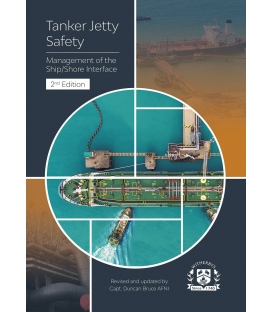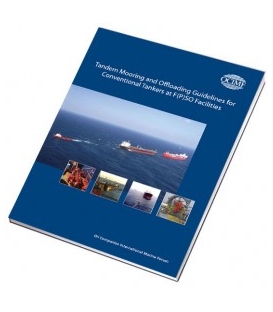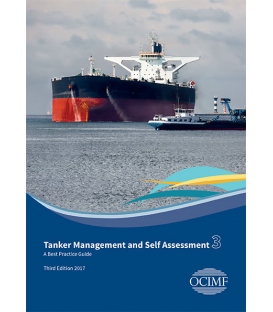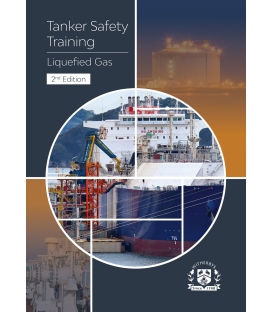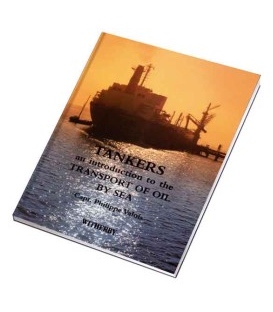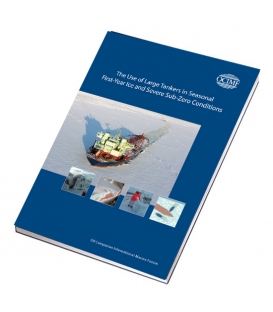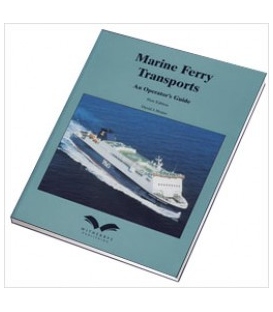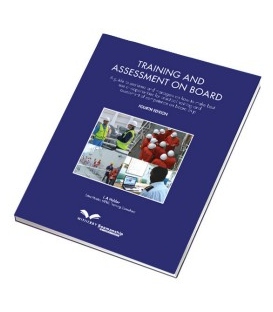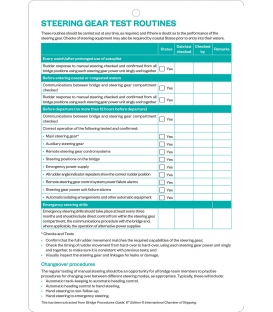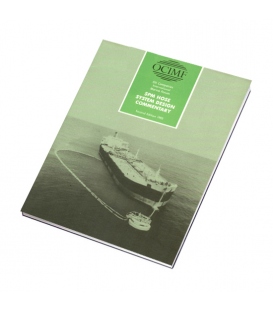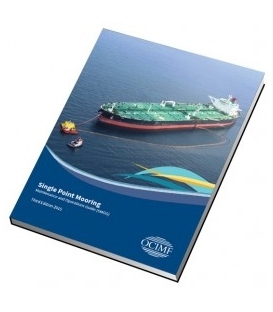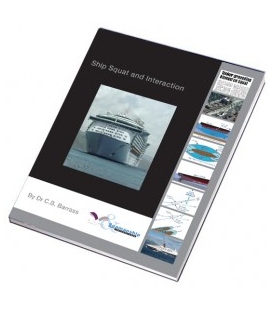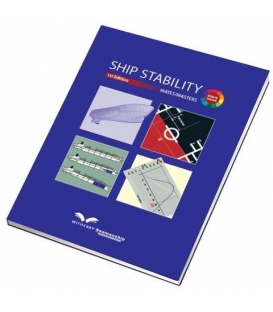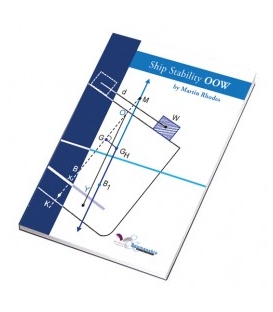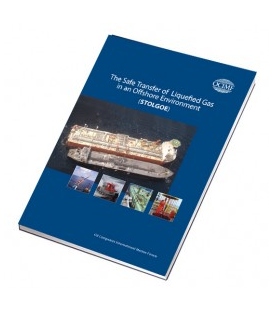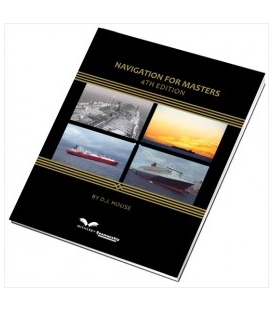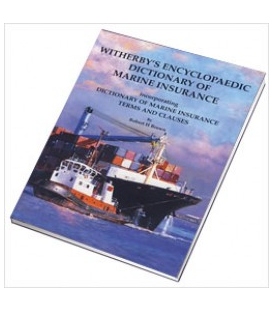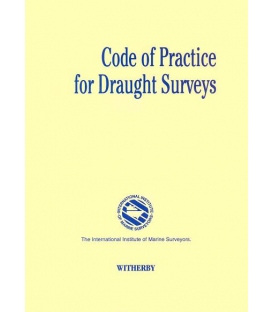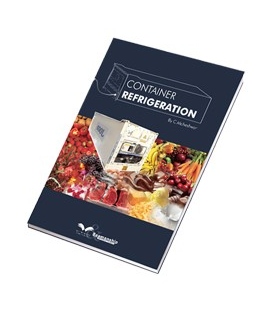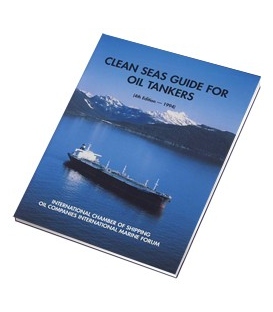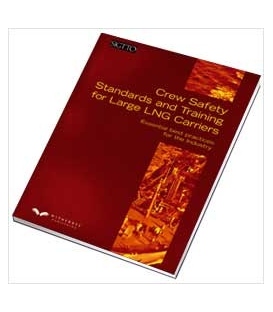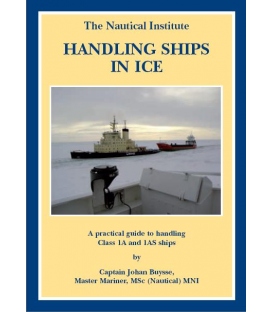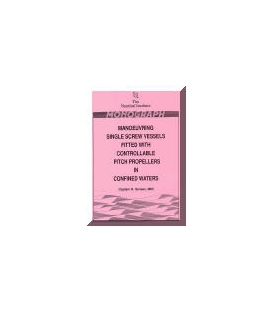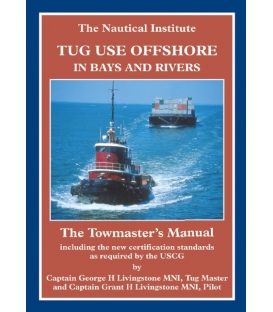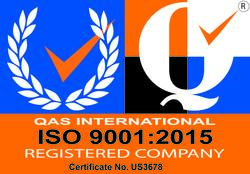

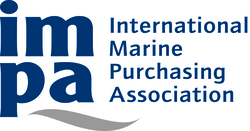
Sign up for our Newsletter
Ship Manoeuvring Principles and Pilotage
Number of Pages: 154
Product Code: 4400w059
ISBN 13: 978-1-85609-210-4 (9781856092104)
ISBN 10: 1-85609-210-0 (1856092100)
Published Date: September 2001
Binding Format: Hardback
Book Height: 230 mm
*** 17 May 2023, Discontinued, replaced by Ship Manoeuvring Principles, 2nd Edition, 2023
Ship Manoeuvring Principles and Pilotage by Paul R. Williamson
This book is an excellent addition to the pool of knowledge on the subject. The text is easy to read and often delivered in an anecdotal style. For experienced pilots it will often ring draw to mind half forgotten night watches and sticky manoeuvres while, for the aspiring pilot, it provides first class advice. The book mixes practice with theory and will find a welcome place in any pilot station.
Easy to read (often anecdotal) and, for experienced pilots, it will bring back memories of long forgotten night watches and sticky manoeuvres.
Chapter 1
Basic Ship Handling. Reducing A Ship’s Speed To Manoeuvre And Turn Around
Manoeuvring Plan (Not Passage Plan), Comparison By Ship’s Lengths, A Standard
Ship, Old And Modern Designs, Reducing A Ship’s Speed To Manoeuvre And Turn Round, Speed Indicating Instruments And G.P.S. Etc.
Chapter 2
Traverse Thrust And Turning A Ship Short Round.
Single And Twin Screws, Fixed And C.P.P., Single And Twin Rudders, Left And Right Handed Inward And Outward Screws Convention
Chapter 3
Centre Of Turn And Sideways Slip.
Position Of The Centre Of Turn Relative To The Ship’s Speed, Sideways Slip.
Chapter 4
The Effect Of Wind And Other External Forces On A Ship.
Wind Force Chart Etc., Drift Caused By The Wind On The Loaded And Light Slip And The Effect Of Trim. The Wind Effect Relative To The Position Of The Ships Centre Of Turn, On An Even Keel And Trimmed By The Stern. The Effect Of Superstructure In The Wind. The Wind Effect Due To Its Relative Direction. Additional Superstructure Wind Effects. The Bernoulli Effect. Other External Forces, Including Tugs Etc.
Chapter 5
Assessing A Ship For Manoeuvring
Assessing The Effect Of Trim On The Ships Wind Force Point And Wind Resistance Point And How It Will Effect Manoeuvring A Ship, Relative To The Manoeuvring Space Available
Chapter 6
General Berthing And Unberthing Guidelines
Berthing A Ship In Calm Conditions Allowing Safety Margins, Use Of Indicating Instruments When Manoeuvring, Berthing In Tidal Waters, Allowing For The Transverse Thrust, Berthing Stern To Tide, Berthing To Buoys, Why A Ship Appears To Increase Speed As It Approaches Its Berth.
Chapter 7
Berthing A Ship Using An Anchor
With A Wide Tide, Onto A Weather Berth And When Berthing With An Offshore Wind
Chapter 8
Berthing And Unberthing Using Tugs
Conventional And Tractor Tug Capabilities, Positioning Tugs For Un-Berthing And Berthing, Girting
Chapter 9
Thrusters.
Transverse Thrusters, And Azimuth Units
Chapter 10
Examples And Calculations To Approach A Berth
Planning Approach To A Berth (A) A Small Ship Without Any Aides, And (B) A Big Ship Using Tugs
Chapter 11
Manoeuvring In Fog By Radar
Assessing The Limitations Of A Radar And Determining A Radar’s Ability, Calculating A Ships Speed By Radar, Allowing For Position Of Radar Scanner
Chapter 12
Anchoring A Ship
Anchoring In An Open Anchorage, And In A Restricted Anchorage, Choosing A Position Where To Drop The Anchor, Anchoring A Ship Using A Radar With Various Presentations
Chapter 13
Passage Planning
Passage Planning Inbound And Outbound
Chapter 14
Port Approaches, And Navigating Narrow Channels
Allowing For Set And Drift, Overtaking And Other Manoeuvres, Establishing A Ships Identity By V.H.F. Methods For Losing A Ships Way Quickly, Ships Sailing Before The Wind
Chapter 15
Tug And Tow
Piloting A Tug And Tow On A Passage, Berthing Towed Vessels
Chapter 16
Handling Characteristics Of Different Ship Shapes
Handling Differences Between Narrow Deep Ships And Short Beamy Ships
Chapter 17
Tidal Streams
Spring And Neap Tides, New And Full Moon, Tidal Streams, Counter Currents, And Slack Water, And Their Effect On Handling Ships, The Change Of Direction Of Tidal Streams At High Water And Low Water
Chapter 18
Squat, Interaction, Reaction, Drag And Grounding
Why And When Ships Squat And Warnings To Look For, Interaction Between Ships, Reaction Between A Ship And The Bottom, A Ships Loss Of Speed Due To Drag. Manoeuvring In Shallow Water. The Effect Of Pressures Caused When Manoeuvring A Ship With The Minimum Under Keel Clearance, Reaction To Grounding.
Chapter 19
Incidents
Stories Of Perfectly True Incidents That I Have Experienced That Most Seafarers Would Have Found Difficulty Believing
Chapter 20
Miscellaneous
Agreeing The Ships Program Etc. Giving Engine Orders And Helm Orders, Care With Twin Screwed Ships With Single Rudders, Giving Directions To Tugs, Checking The Gyro Compass, Steering Settings, Noting The Difference In Wind Directions When Navigating Rivers, Climbing A Pilot Ladder, And How To Board A Submarine
Chapter 21
Finally
The Pilots Responsibilities Relative To The Ship, And To The Shore Authorities
Index





